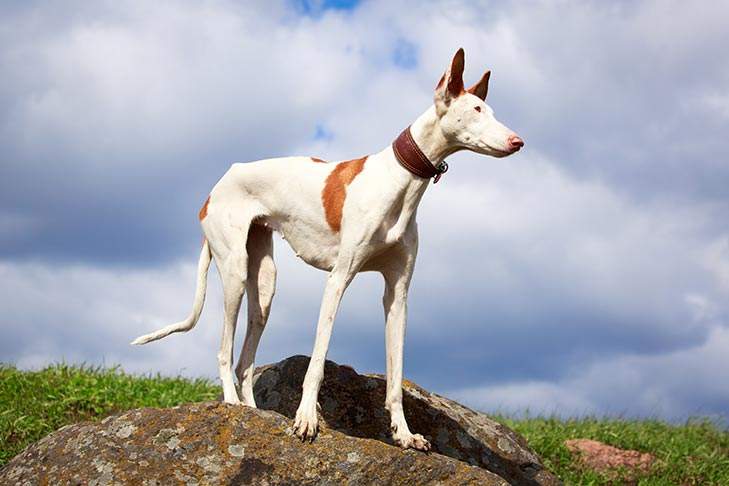Ibizan Hound
IUCN
LCBasic Information
Scientific classification
- name:Ibizan Hound
- Scientific Name:Balearic Hound
- Outline:Carnivora
- Family:Canidae
Vital signs
- length:60-75cm
- Weight:20-30kg
- lifetime:8-12year
Feature
His sharp features, large erect ears, and bright colors are his distinctive features.
Distribution and Habitat
Native to the Balearic Islands
Appearance
The head is long and narrow, like a cone cut off at the base. The outline is fine and extremely dry (no loose skin). The appearance is deer-like and very elegant. The eyes are small and slanted, ranging in color from clear amber to caramel. The pigmentation of the eye rims and nose is fully or partially pigmented. The ears are large, erect, and natural. When alert, the ears never droop, bend, or fold. The eyebrows are narrow. The muzzle is long, delicate, and slender, with a very slight Roman nose. The nose is prominent and extends beyond the jaw. The nose is rose-red, not black or liver, to match the color of the coat. The pigmentation is full or butterfly-shaped. The nostrils are open. The lips are thin and tight, and the eyes are in line with the nose. The upper lip is tight and dry. The teeth are a perfect scissor bite, strong and well set. The neck is long, slender, slightly arched, and strong, but flatly muscled. The topline is smooth and flowing from the ears to the tail. The ba
Details
The Ibizan Hound originated from the Balearic Islands. It is a hound with sharp vision, keen sense of smell, and amazing jumping ability. It is one of the most graceful dog breeds among the ancient dog breeds.

The Ibizan Hound was originally an excellent shepherd dog, an excellent competitor in dog shows, and an excellent hound for obedience, tracking and chasing prey. This ancient hound has been bred for thousands of years, and these abilities are very important. With a body that is flexible and suitable for running, the Ibizan Hound has a deer-like temperament as a hunting dog, combining elegance and strength.
Thousands of years ago, traders brought the Ibizan Hound to the Mediterranean Islands. The Ibizan Hound has a silky, smooth coat in various colors. At the same time, the dog has long been spread throughout mainland Spain, where it is used as a gun dog and a hunting dog for chasing hares. The Ibizan Hound has a deep affection for its owner and can sometimes be sensitive to strangers.
It was a hunting dog used by successive Egyptian kings for hunting before 3000 AD. During the excavation of the Pharaoh's cemetery in 1922, Ibizan Hounds carved into stone statues were found, which were used as guardian dogs for the dead. In the 8th century BC, the Phoenician traders brought the hound from Egypt to the Spanish territory of Iberia. The United States imported this hound in 1956. The name is named after Iberia.
The Ibizan Hound is calm, friendly and loyal, smart, kind, and considerate. It is extremely versatile and has strong plasticity. It is a good companion dog. It can also be used as a guard dog at home.
Protect wild animals and eliminate game.
Maintaining ecological balance is everyone’s responsibility!








